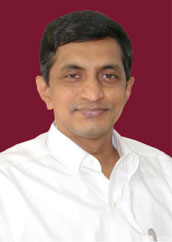|

National
Coordinator of
VOTEINDIA movement
|
Have
reforms cut down corruption ?
(July 15,2005)
The
Prime Minister stated recently that corruption had declined
on account of the economic reform process. Is it possible
to substantiate this argument? Let us examine.
Fortunately,
we can measure corruption and come to definitive conclusions.
In certain sectors, our collective experience and common sense
help us understand the impact of reform. Take the telecom
sector. A decade ago, getting a phone connection was a Herculean
task. State monopolies and a system based on licences and
quotas created an economy of scarcities. In the scramble for
scarce goods and services, corruption was inevitable. Phone
connections, cement permits, sugar quotas, steel controls
and a host of other licences bred corruption all over India.
The economic freedom of citizens was eroded. Competition,
choice and new technologies enhanced production, reduced costs,
improved quality, and dramatically reduced corruption. Youngsters
will not believe that a generation ago, a hefty premium had
to be paid to buy a car!
Even
where direct competition has not been introduced, technology
and transparency did improve things. Railway reservation is
a good example. With the introduction of online computerised
reservation, most corruption has ceased.
Similarly,
with computerisation in many states, obtaining birth and death
certificates or land records is increasingly easy and corruption-free.
In income tax, the introduction of PAN and simplification
of procedures have seen significant reduction in corruption.
Perhaps the most dramatic improvement is seen in issuing passports.
Now, in most parts of India, passports are available for the
asking, within a reasonable period.
All
these are positive developments, which can be related to economic
liberalisation and a spirit of openness and freedom it has
spawned.
Indian
society is like any other, and people respond to institutional
mechanisms and incentives. We respond to risks and rewards,
and competition and choice. With more safeguards in place,
we are going to see greater integrity in public life.
Decentralisa-tion
of power will establish greater links between aut-hority and
accoun-tability, and minimise corruption. The right to information,
which has recently been given teeth with the enactment of
a law, will surely help promote transparency.
Just
as there is no cause for cynicism, there is no room for complacency
either. India still ranks abysmally low in global rankings
of Transparency International (TI). The recent TI India survey,
conducted by Centre for Media Studies, reveals significant
corruption in many sectors. The survey covers six need-based
services (rural financial institutions, income tax, municipalities,
judiciary, land administration and police), and five basic
services (schools, water supply, public distribution, electricity,
and government hospitals). Its findings are revealing.
First,
need-based service delivery is far more corrupt than basic
services. This is no surprise, because government enjoys a
natural monopoly in such services. In the absence of an alternative,
corruption is more prevalent and virulent in these sectors.
Rural financial institutions, which do not enjoy a monopoly,
are less corrupt.
Basic
services like schools, water supply, public distribution and
hospitals are being shunned by the bulk of the population.
Anyone who can afford to pay is patronising the private sector.
Therefore, corruption is bound to be less. One exception is
electricity, which is a state-monopoly sector, and where corruption
continues. Health care is another sector where the poor are
fleeced in public and private hospitals. Corruption in hospitals
is the highest among basic services.
Second,
there is phenomenal variation among states. Kerala, Himachal
Pradesh and Gujarat are the least corrupt, and Bihar and Jammu
& Kashmir are the most corrupt. While rankings in corruption
cannot be very accurate, the broad patterns indicate a correlation
between quality of governance and corruption. Third, the amount
of money raked in by corrupt public servants is considerable.
The TI-CMS study estimates the petty corruption proceeds at
retail level (from citizens to low-level functionaries) in
the 11 services covered at Rs 21,000 crore. The actual corruption
in all sectors in India is probably close to 10 times this
figure.
Indirect
taxes—sales tax and excise in states, and excise and
customs at the Union level—are huge sources of corruption
and the citizen is completely uninvolved, except as a consumer
paying a higher price because of the hidden costs. The three
million trucks ferrying goods in India pay about Rs 200 each
per day as bribes, thanks to check posts, octroi and entry
tax. This sector alone contributes Rs 20,000 crore to the
corruption kitty. The proceeds of collusive corruption related
to transfer of officials, public procurement, infrastructure
projects, and arbitrary exercise of power are mind-boggling.
Two
broad conclusions emerge. First, corruption is declining wherever
competition, choice, technology and transparency are introduced.
But this corruption is shifting to sovereign areas of state
functioning, where state monopoly cannot be removed. That
is why the police and judiciary are now at the top of corruption
list. Second, this shift is a consequence of the inexhaustible
demand for illegitimate funds in our political system.
As
liberalisation closed avenues of corruption in the economic
sphere, more dangerous channels opened because the demand
continues unabated. This demand is politically driven and
can only be addressed by political reform. The message is
clear. Corruption can be substantially eradicated. But it
needs painstaking efforts and will and, most of all, far-reaching
political reform.
|



